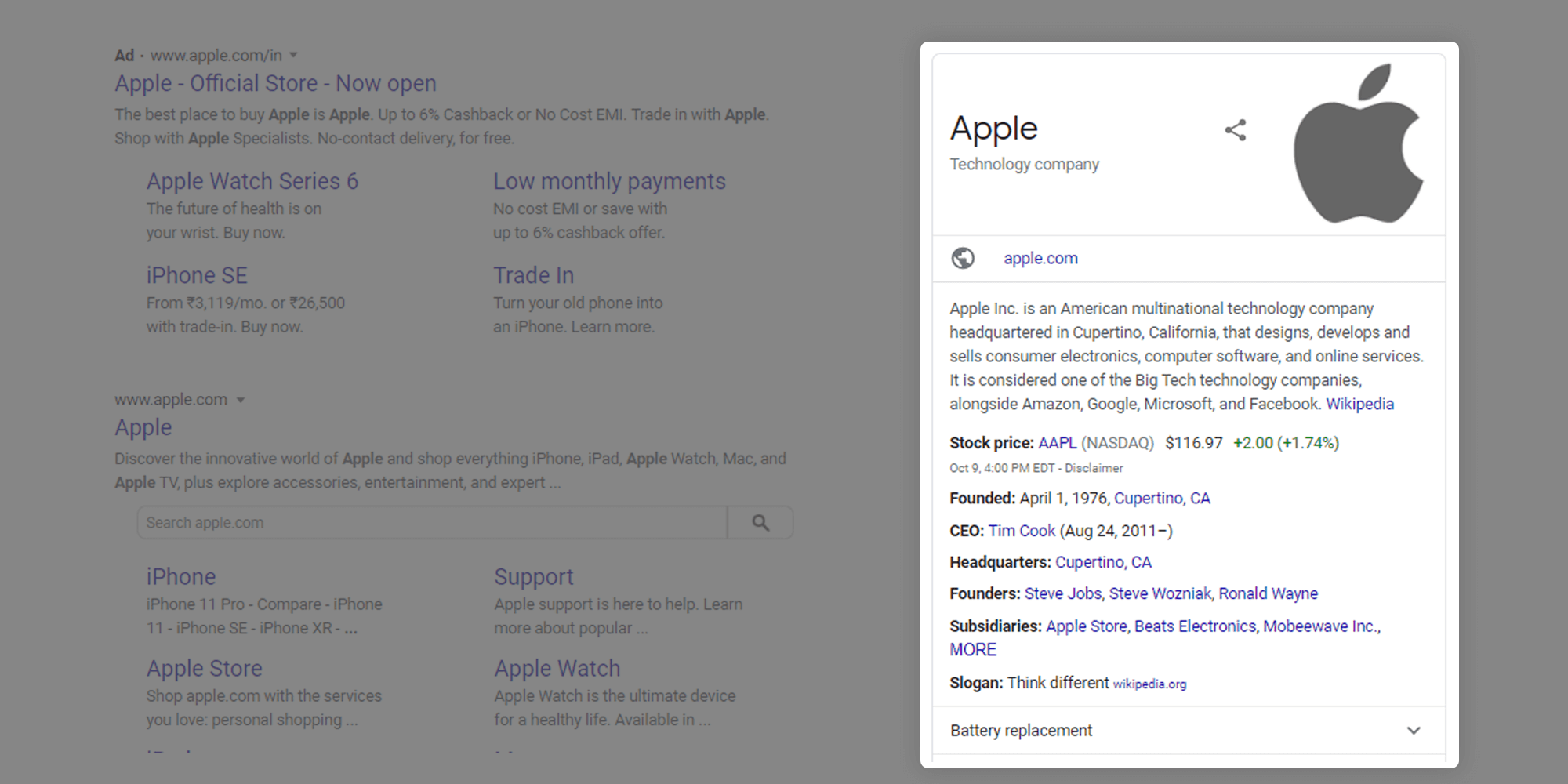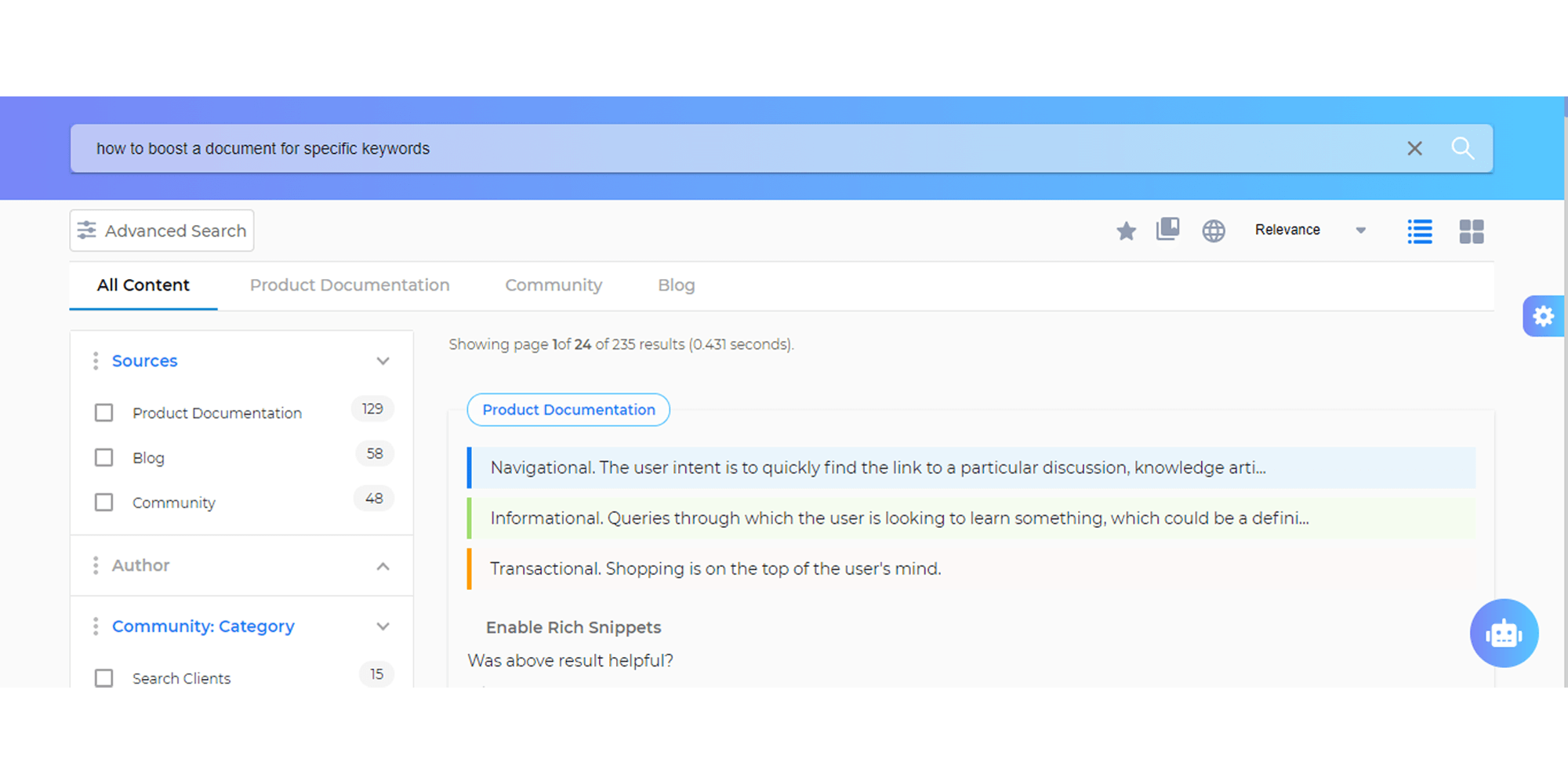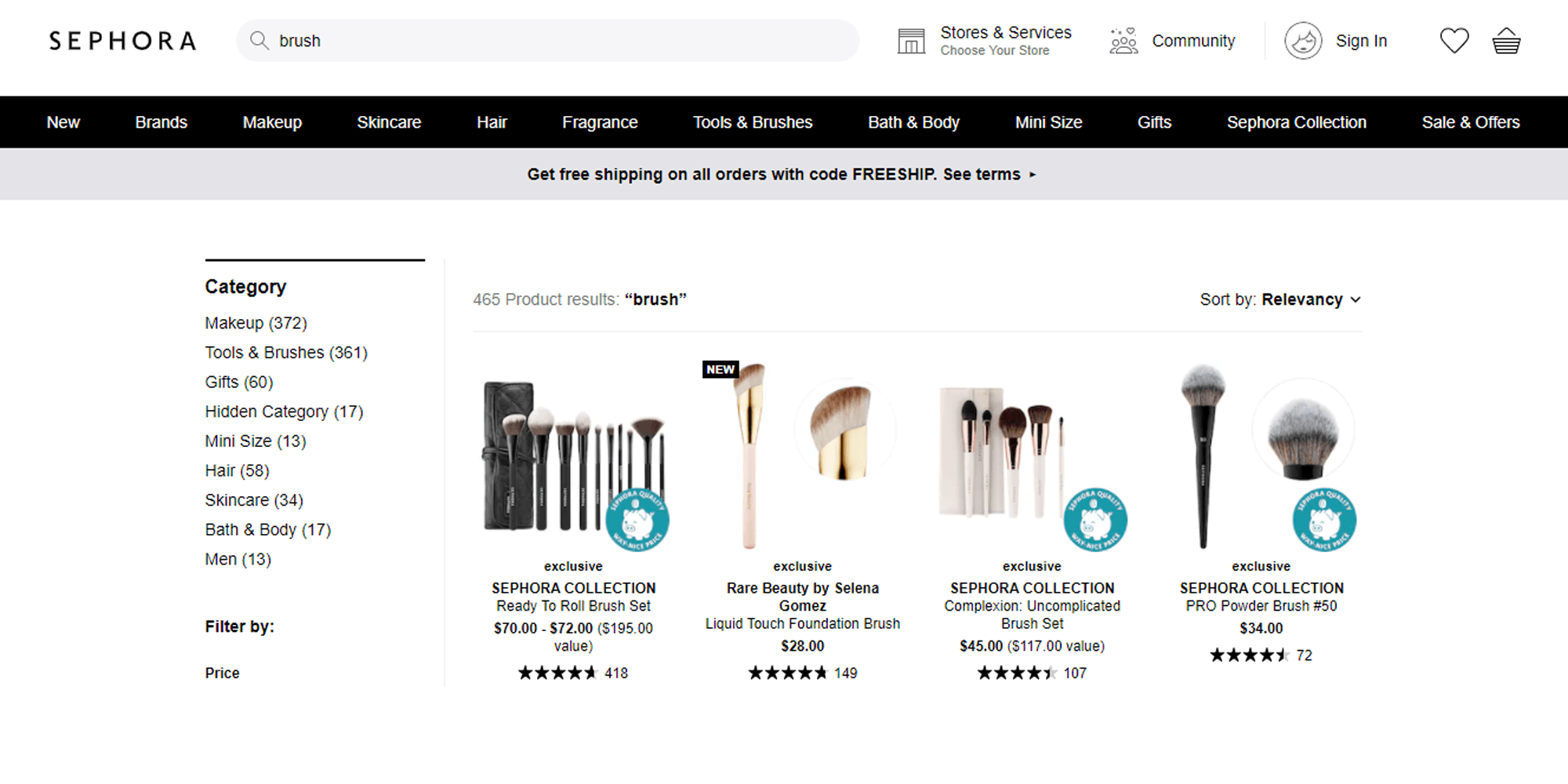
Ever entered a bakery and marveled at the rich, creamy chocolate cakes staring at you through the glass? (If you haven’t, you freak me out.) That’s what rich snippets are to users when they look at the search results page. They give users a “sneak peek” so that they know which result to click.
According to Search Engine Watch, rich snippets make it easier for search engines to crawl your site and interpret the pages. While rich snippets are already popular for web search and SEO strategies, they have a great role to play in enterprise search as well. If you’re not familiar with the concept or don’t know how to use rich snippets for enterprise search, you’ve landed at the right place. Let’s start with the fundamentals.
The Technical Definition
Rich snippets are visually appealing search results that provide you additional information along with the basics–URL, title, and description. If you look at the following examples, you will realize how snippets package this additional layer of information, such as reviews, price, availability, etc., to build trust and improve CTR.



Why You Should Bother About Rich Snippets
The short answer is user experience.
Modern users have been spoilt by web search and they want to see relevant information as quickly as possible. They want to be very sure of the link they click on to get the answer to their queries. They expect the same experience from enterprise search as well. While there are spectacular differences between the way web search and enterprise search engines work, you can utilize rich snippets in both.
Consider this scenario. A newly appointed UX manager, Carrie, wants to boost certain documents for users. Her project uses a cognitive search engine but she isn’t familiar with it. So she goes to its website and searches “how to boost a document for specific keywords.” Et Voila!

She is presented with a rich snippet, like the one above, that extracts the steps from the technical document and provides her a quick overview of the procedure. In this particular case, she didn’t even have to click on the link as she got the steps from the snippet itself. A happy Carrie returns and recommends the website for getting product-related answers to others as well.
Here’s what happens at the back-end. The information in rich snippets is stored as structured data in the source code. It makes the indexing in enterprise search engines easier. This, in turn, improves the relevancy of search results. Users get more contextual results. Now that we have covered the what and why of rich snippets, let’s see the prerequisites for them to work for your enterprise search.
Prerequisites for Rich Snippet Content
1. Add Metadata
When you add details such as author, date created, age, or length of a document, you are adding useful information that can become a part of the snippet. It will help the users to get to relevant information faster.
2. Highlight Important Aspects
Companies that have hundreds of thousands of documents often face problems in finding and ranking contextual results. This problem is worsened by the fact that a lot of users type very few or generic keywords that come in several documents. In such scenarios, you have to find ways to say more in snippets.
For instance, if the author of an article is your CTO, mentioning that in the snippet will significantly drive up its appeal. Also, users can even get the idea of selecting a particular facet or editing their query based on the information in a snippet, which brings them closer to relevant results.
3. Add Images
Beauty is in the eye of the beholder, but that doesn’t mean you forget the importance of presentation. Good visual images, such as below, matter.

Not just e-commerce sites but across various industries, a snippet including an image generates user interest and significantly improves the UI. Take another example of the BBC News website.

Rich snippets contribute to delivering better UI in a variety of industries–food, news, e-commerce, pharma. They can be even leveraged for technical documentation, FAQs, how-to, and on a job listings page. Where there is search, there lies an opportunity to elevate the UX. And the easiest way to develop rich snippets for your business is by employing cognitive search.
[Also Read: Provide Enhanced User Experience On E-Stores & Improve Conversion Rates]
How Cognitive Search Helps Create Richer Snippets
1. Engineering Contextual and Dynamic Snippets
A cognitive search engine is powered by AI and doesn’t just rely on keywords for returning a search result. It understands the interrelation between entities and hence identifies the context of user query to return supremely relevant rich snippets. The best part of using a cognitive engine is it displays dynamic snippet content based on user query and content types.
2. Tapping Into Unstructured data
Earlier, Netflix used to just simply recommend content. Recently, it has started mentioning extra information such as “Trending at #4 in TV Shows Today”, “Top 10 Trending in US” etc. This little information entices several users to take a look. Cognitive engines are powered by NLP algorithms that can unearth hidden insights and patterns in unstructured enterprise data. You can harness it to train semantic models and also identify better keywords to create richer snippets.
3. Enriching Knowledge Graphs
Knowledge graphs are getting pretty popular with businesses. If you’re not familiar with them, here’s a blog post that will help. They can put together all their data to power more impactful snippets. Cognitive search has a symbiotic relationship with knowledge graphs. While a knowledge graph helps to extract relationships between multiple entities, a cognitive engine feeds data through user queries, to build a knowledge graph.
Conclusion
Rich snippets have a lot of potential and it’s essentially going to change the way users interact with enterprise information. A powerful cognitive search engine helps big time in creating rich content snippets with minimum efforts. Having said that, it can be tough to zero in on the right search platform. But don’t worry, we have got you covered.
Want to Know More About Cognitive Search Engines? Here’s a Comprehensive Guide That Will Help.
This eBook lists 10 variables to evaluate cognitive search solutions including its architecture, intelligence, information connectivity, and much more. Choose the right solution to improve the UX of your platform.



















